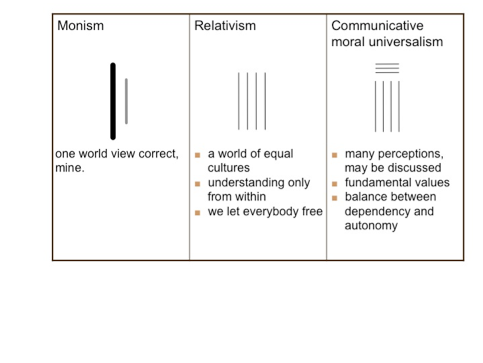Sign up for FlowVella
Sign up with FacebookAlready have an account? Sign in now
By registering you are agreeing to our
Terms of Service
Loading Flow

Concepts of Culture

Instead of trying to define culture, many researchers developed concepts (models, graphs, colors and so on). First the model of Van Asperen is mentioned, giving some basic ideas of culture. Secondly, the model of Pinto stresses a key element in many studies of culture, the dichotomy between individual and group. Then we move on to the concept of Thomas and Inkson (which might be seen as the cultural competence), the triangle of Richard D. Lewis and the triangle of Van Nispen.
According to Van Asperen (and in line with the findings of cultural anthropology) people may show three basic perceptions of culture. The first is monism or 'my culture is better’, the idea of superiority of one culture over another. An example is the attitude of Europeans vis-à-vis the rest of the world over a century ago; but also the attitude of some politicians in the West regarding the Islam.
Secondly, relativism stresses that cultures are equal but also that you can never (fully) learn the culture of another. Although you respect other cultures, each culture stays on its own and does not mingle with other cultures. Together but separately, like a China town in San Francisco where you cannot find anything in English. The problem is then of course to create a municipal or national community.
The third idea builds on relativism but emphasizes that cultures have common elements, which may be used to build bridges between cultures. Van Asperen uses the example of universal human rights but in view of widely divergent interpretations of these rights, this example complicates things rather than clarifying.